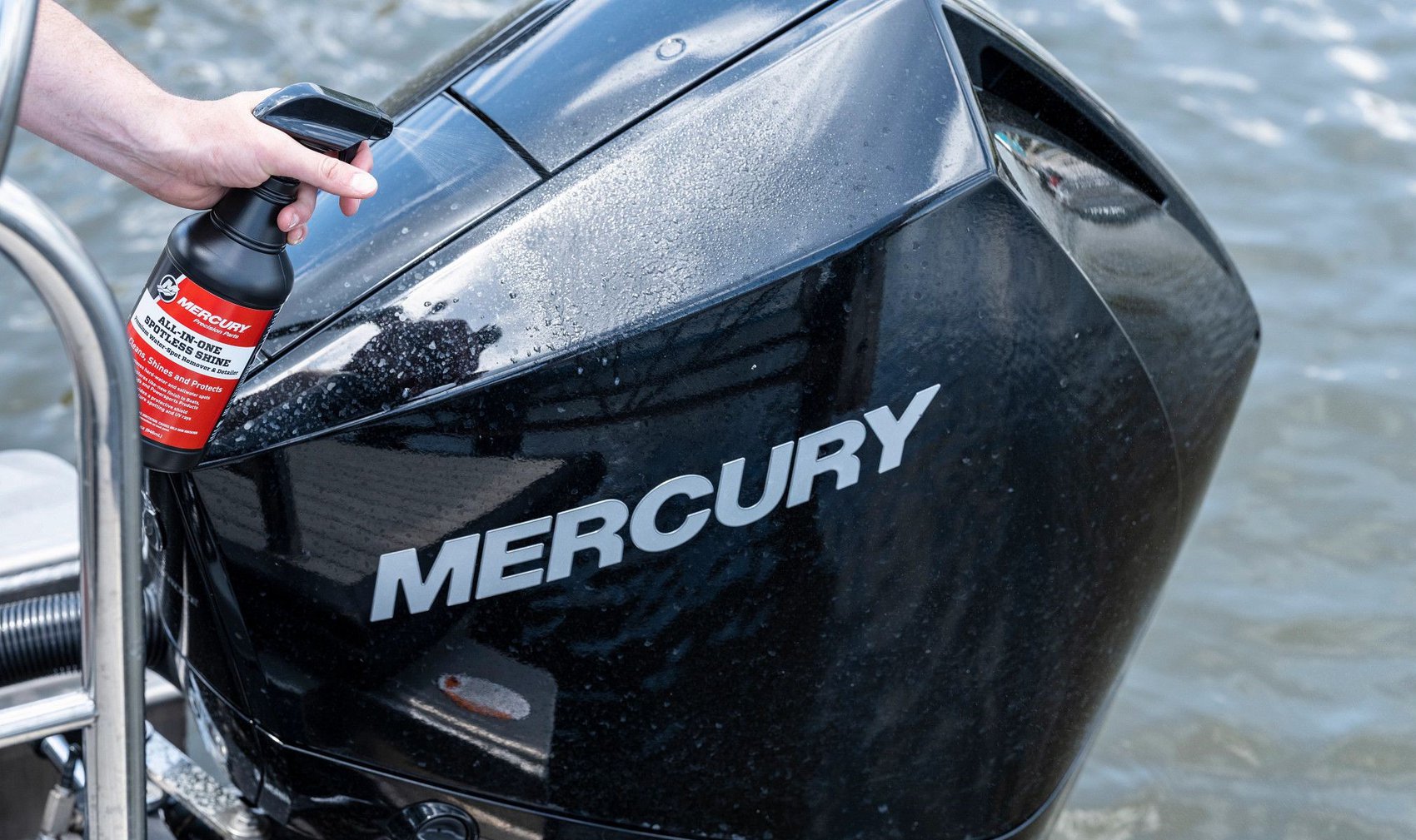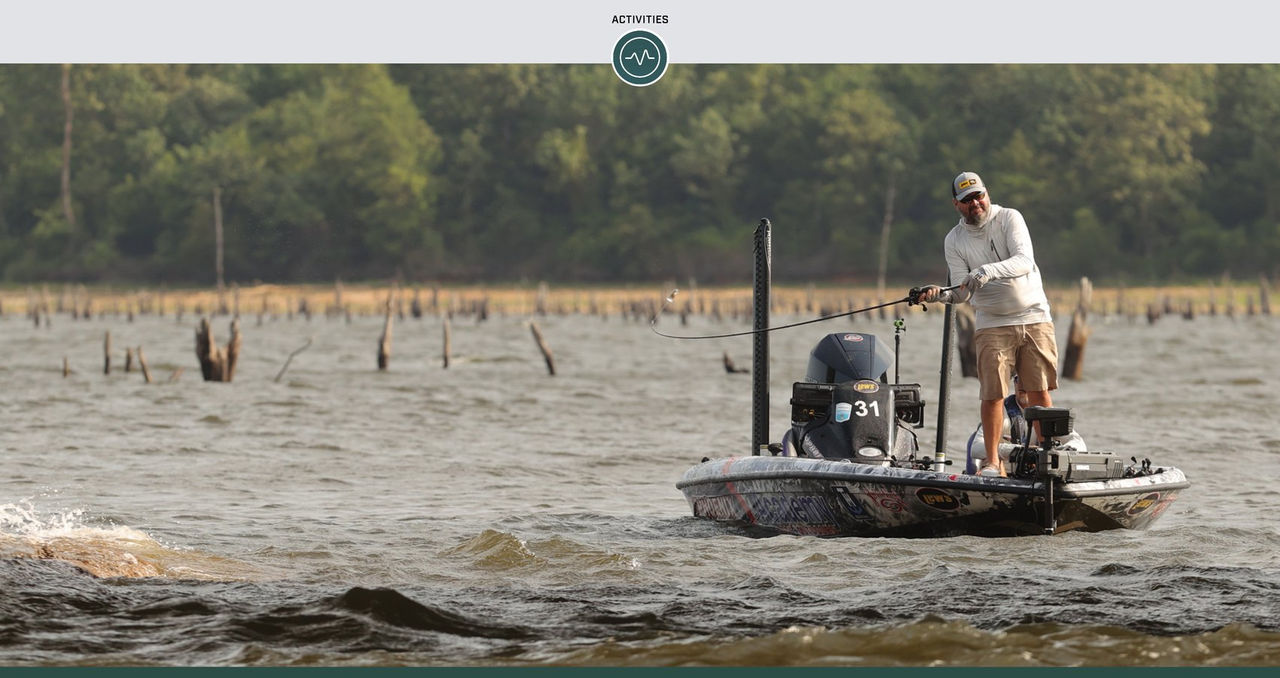Greg Hackney is an independent thinker. Over two decades of professional fishing, the Mercury Pro Team member has learned to trust his gut over going with the flow — unless he’s dealing with actual flowing water.
In that case, Hackney knows that current remains one of the most predictable powers influencing where, when and how bass position. The Bassmaster Elite Series veteran recently shared his thoughts on strategies for finding and catching current-oriented bass.
1. Consider Seasonal Patterns
Current-related patterns vary by season. During most of the year, bass take advantage of the flowing water to forage, as the current helps deliver food. In spring, this holds true in the prespawn and postpsawn periods. However, in between, Hackney expects to find bass moving away from the heaviest current to spawn. Where this occurs depends on the fishery.
“With river fish that live in current, there’s no migration. They may live out on main river bars, and they literally just go to the bank to spawn,” he said. “Whereas, in southern Louisiana, the fish will run away from the current and spawn in the backs of canals where the water is warmer.”
While spring rains and snowmelt often bring heavy flows, the summer months typically see less water volume moving through river systems.
“Current is most important during summer through early fall, when water quality is not as good and the water temperature is so high,” Hackney said. “Current positions fish year-round, but in the summertime, the fish actually need it. Especially in the Deep South, it’s as much for their quality of life as for feeding opportunities.”
With lower flows in many fisheries in summer, Hackney often seeks out short-term sources of current, such as inflowing drains, locks opening (more on this later) or periods when water is being drawn through the dam.
The latter situation is key on major power-generating reservoirs like those of the Tennessee River. Afternoon generation cycles see dam operators pulling water through dams to crank the turbines. Each day’s projected generation schedule (published on the relevant website and/or app) tells anglers when the offshore bite should accelerate in the reservoir. Also, right behind a dam, the outflowing “tailrace” presents prime feeding opportunities. Look for fish stacked behind large boulders and other current breaks where they wait to pick off disoriented baitfish.
2. Dialing in the Details Can Mean Getting Creative
As mentioned, summer and early fall in some regions bring a combination of low flow and high heat, which generally equals lethargic bass. Likewise, some fisheries that have steady current have a very low flow. This is when Hackney keys on short-term sources of faster-flowing water or features that concentrate current.
For example, during his second-place finish at the 2022 Bassmaster Central Open on the Red River, Hackney knew the baking September conditions would prove challenging on this characteristically slow-moving river. His solution: Target areas that would see maximum water movement.
“The deal was finding a ‘neck-down place’ (a narrow chute that concentrates current),” Hackney said. “That’s a huge deal on river systems that don’t run a lot of current during the year. They weren’t running any water on the Red River, so the current I was fishing was (the outflow) from boats locking. Every time they would open or close the lock, if you could find a neck-down place between two bodies of backwaters off the river, it would pull water in or out.
“It wasn’t constant, but every time the water would move, the fish would feed. The fish were there all the time, but they were more aggressive when the water was moving.”
Hackney says the same scenario occurs throughout the southern and central U.S. Wind-driven current can create a similar effect, as can tidal fluctuations. On tidal fisheries, Hackney says bass will feed on both incoming and outgoing tides, but the outgoing tide tends to ramp up the feeding. To capitalize, he’s sure to set up in areas that concentrate the tidal currents that result from water flowing out of shallow areas.
3. Match Your Tackle to the Flow
When it comes to tackle, Hackney minds two key considerations: profile and weight. Specifically, he finds baitfish presentations excel because bass are mostly ambushing prey that’s higher in the water column. To ensure the right look in swift flows, Hackney leans toward bigger or heavier baits.
“The main thing is making the bait look natural, but in (strong) current, you have to go heavier or you can’t present the bait to the fish,” he said. “You can’t actually get it to them.”
His go-to lures include a 1-ounce Strike King Bottom Dweller spinnerbait, hair jigs, crankbaits, and soft-plastic swimbaits such as the Strike King Rage Swimmer (for dirty water) or Shadalicious (for clear water). On major river/reservoir systems like the Tennessee River, Hackney finds the Strike King Thunder Cricket bladed jig with a Rage Swimmer trailer to be one of his most productive lures in current because it maintains an enticing look and vibration at fast or slow speeds. One of Hackney’s favorite ways to fish this bait is to bump it over rocks and rely on the combination of blade vibration and swimming trailer to close the deal.
“The good thing about that swimbait trailer is it will ‘float’ that bladed jig and keep you from getting hung in the rocks,” Hackney said. “A lot of current fishing is around rocks, whether it’s a tailrace or rocks on a flat, because you’re looking for a current break.”
Hackney’s closing tip: Use a baitcasting reel with a 6.2:1 gear ratio rather than a high-speed reel. This forces him to slow down and fish his bait thoroughly, so he gets the right look that convinces fish to bite.
“You need a reel (retrieve) speed that allows you to control the lure without working you too hard, but you want that natural drift. You don’t want to ‘over-pull’ the bait,” Hackney said. “The other thing is that I’m going to use the biggest line I can get away with and still make the bait look natural. Typically, current fish are strong, and a lot of times, in current, you’re fishing for big fish.”
For more from Greg Hackney, follow him on Facebook and Instagram. You can follow the entire Bassmaster Elite Series field at Bassmaster.com.




